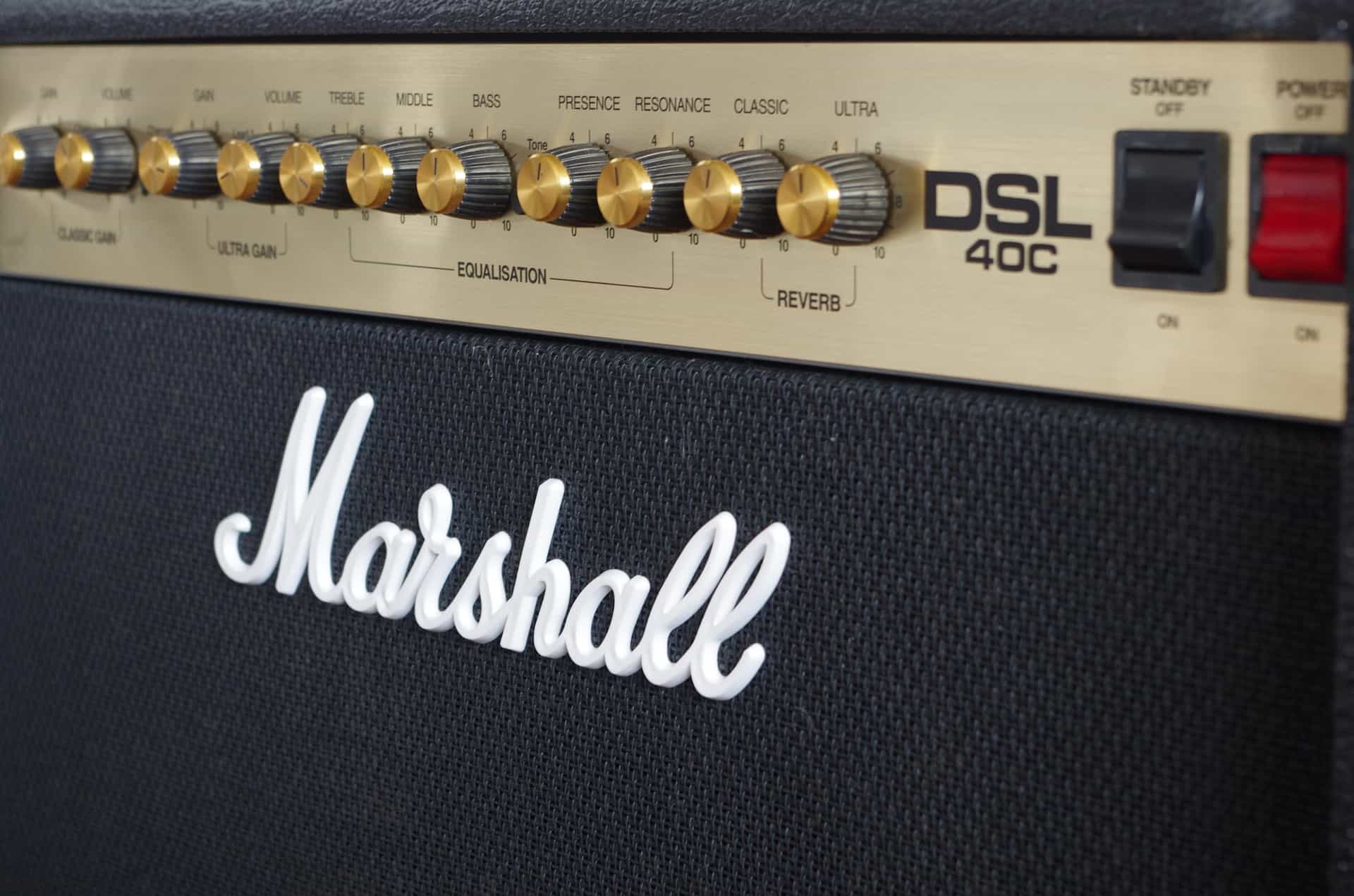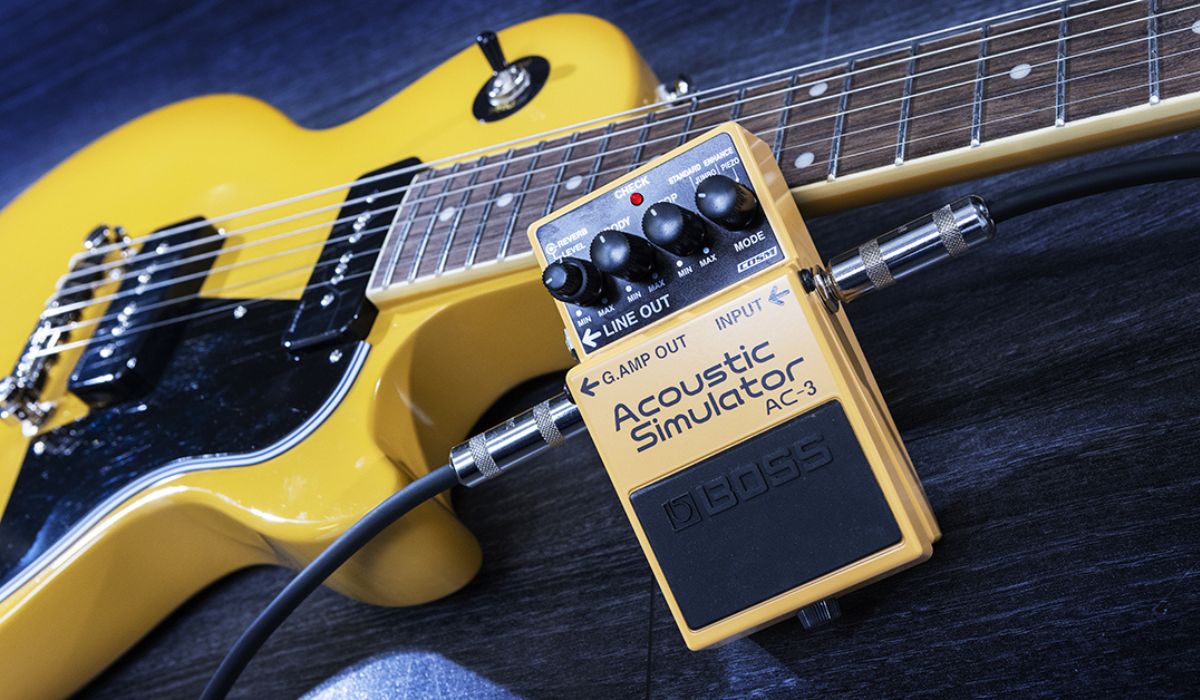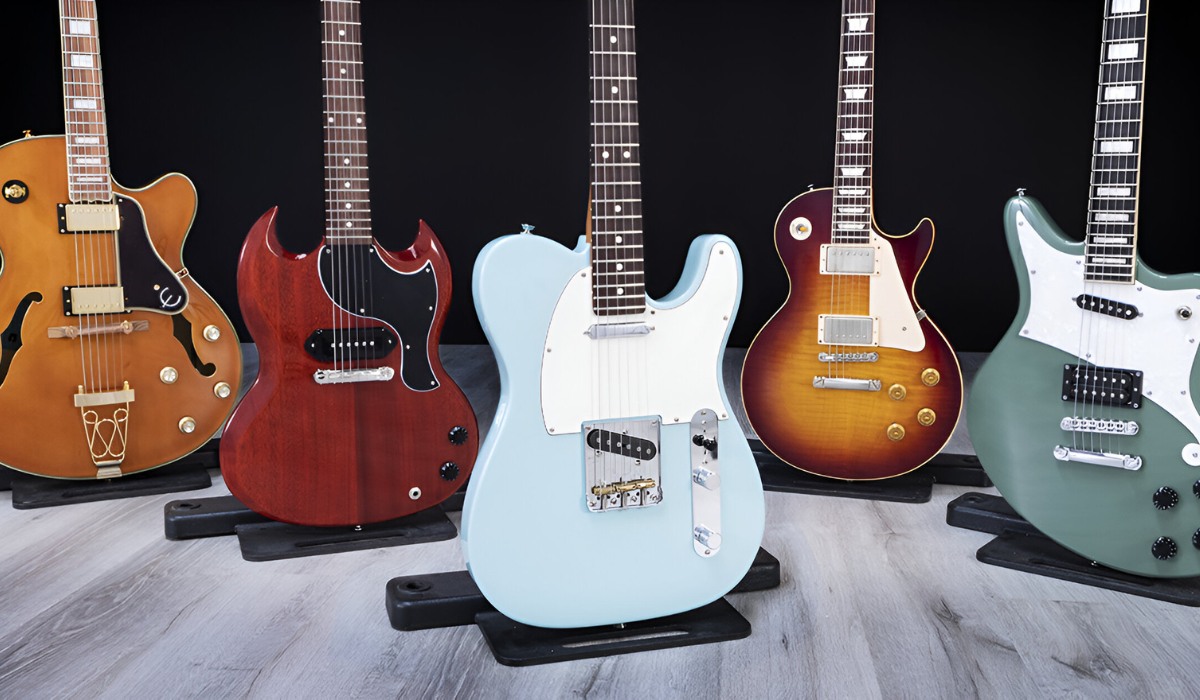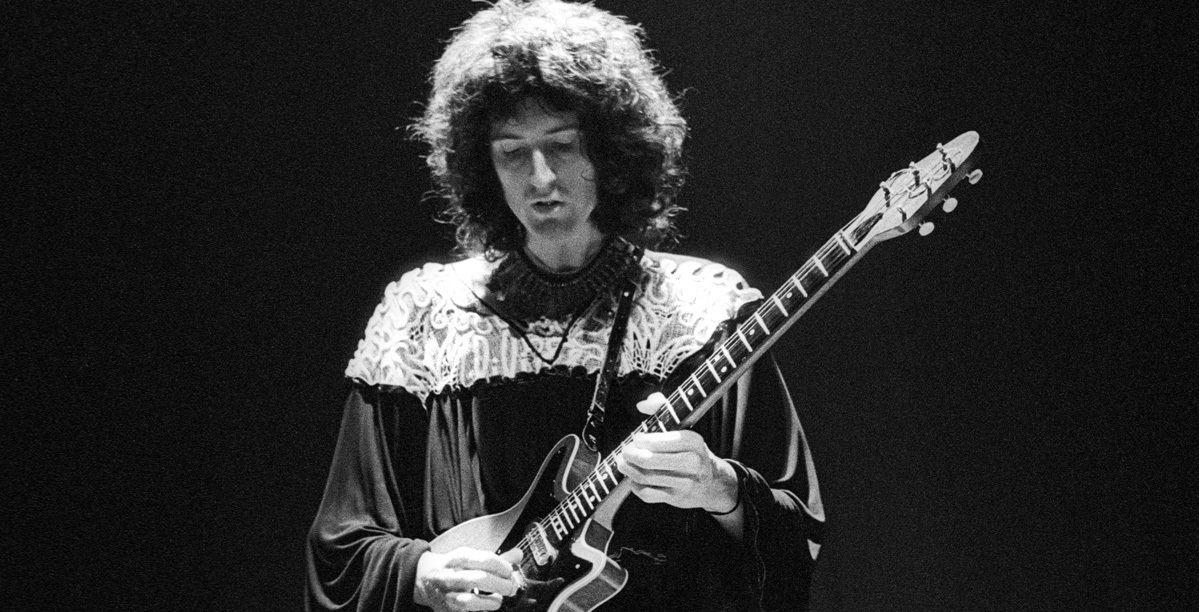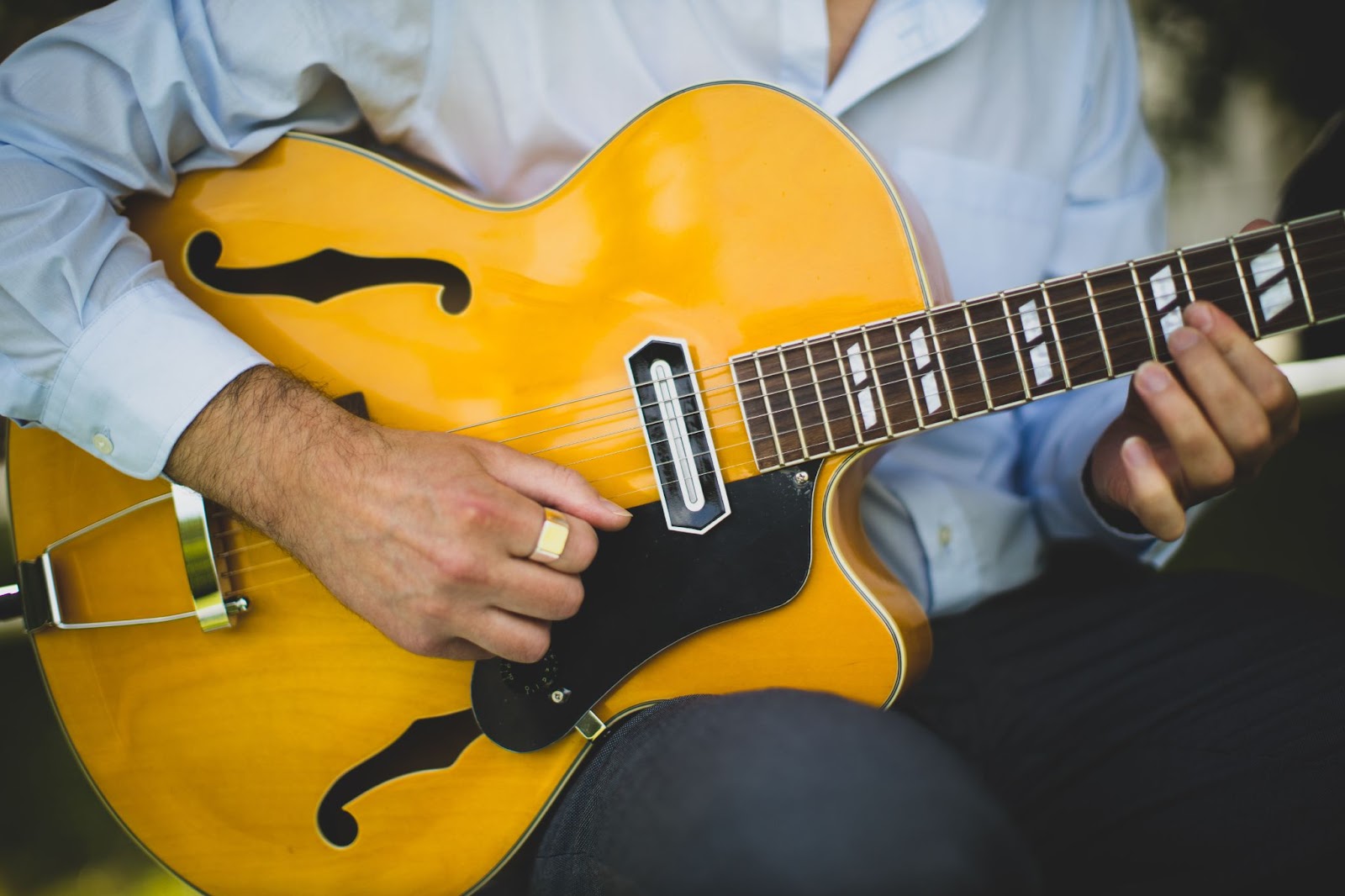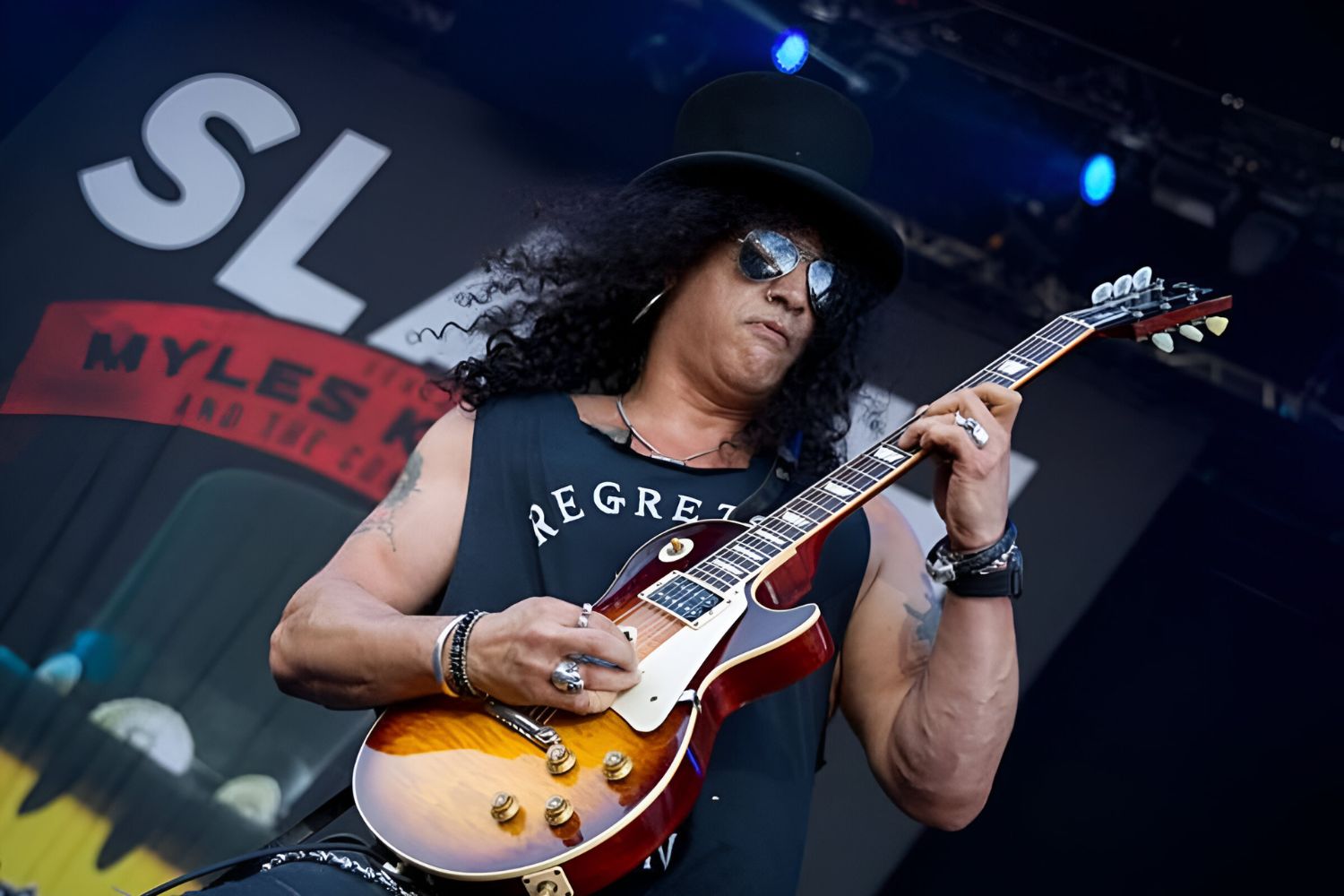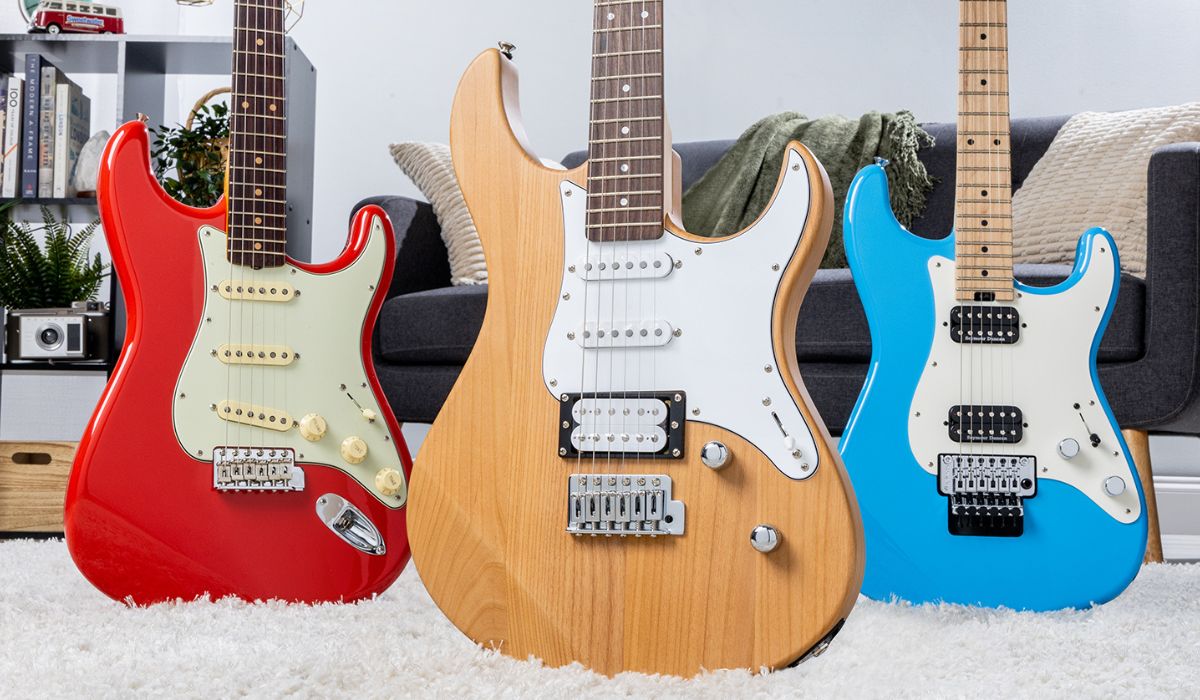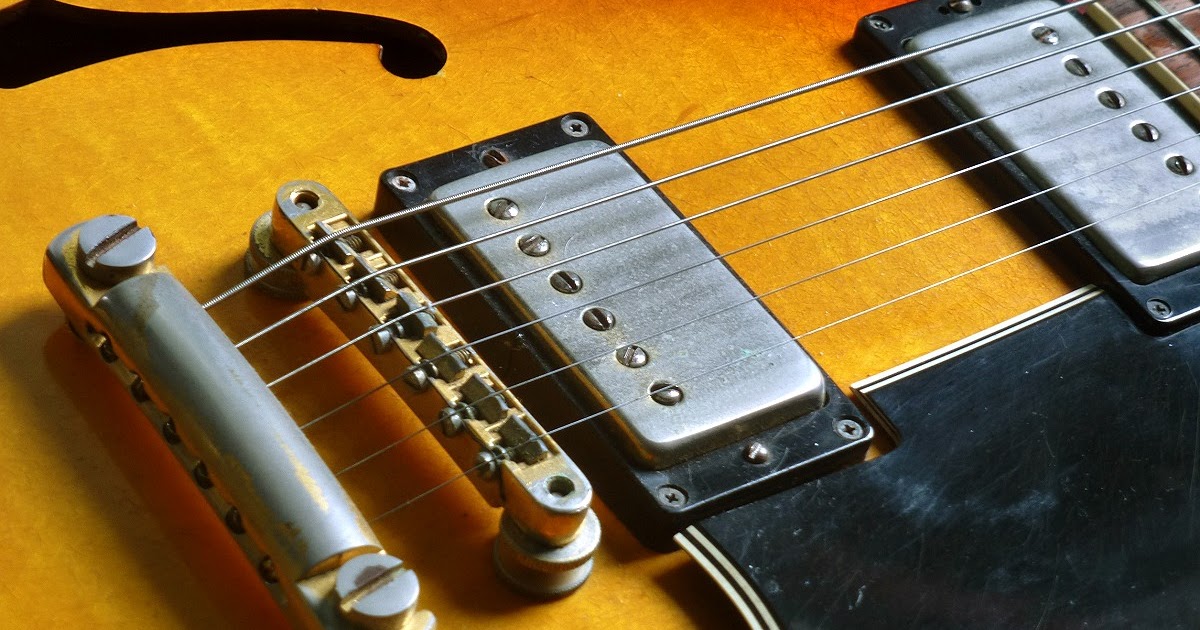Introduction
So, you've got an electric guitar and you're ready to rock out like your favorite guitar heroes. Whether you're a beginner or an experienced player, getting that classic rock sound from your electric guitar is a thrilling pursuit. The electrifying riffs and soaring solos of rock music have captivated audiences for decades, and now it's your turn to harness that power.
In this guide, we'll explore the essential techniques and equipment you need to make your electric guitar sound like pure rock 'n' roll magic. From adjusting your guitar settings to mastering classic rock techniques, we'll cover everything you need to know to unleash the raw energy and attitude of rock music through your instrument.
So, grab your guitar, crank up the volume, and get ready to dive into the electrifying world of rock guitar. Whether you're aiming to emulate the timeless sound of rock legends or carve out your own unique style, this guide will equip you with the knowledge and skills to make your electric guitar roar with the unmistakable sound of rock. Let's embark on this sonic adventure and unlock the secrets of achieving that iconic rock guitar sound.
Choosing the Right Equipment
Before you can unleash the thunderous sound of rock music from your electric guitar, it’s crucial to ensure that you have the right equipment at your disposal. The foundation of achieving that quintessential rock tone lies in the careful selection of your guitar, amplifier, and other essential gear. Let’s delve into the key components that will set the stage for your rock guitar journey.
The Guitar: When aiming for a rock-centric sound, the type of guitar you choose plays a pivotal role. Solid-body electric guitars, such as the iconic Fender Stratocaster and Gibson Les Paul, are revered for their ability to deliver powerful, sustained notes ideal for rock music. These guitars are known for their versatility and ability to produce a wide range of tones, making them the go-to choice for many rock guitarists.
The Amplifier: Your amplifier serves as the voice of your electric guitar, shaping and projecting its sonic character. For rock music, tube amplifiers are highly favored for their warm, dynamic sound and natural overdrive when pushed to higher volumes. Additionally, the choice of speaker cabinets and effects loops can significantly impact the overall tonal quality, allowing you to tailor your sound to suit different rock styles.
Effects Pedals: Distortion and overdrive pedals are indispensable tools for crafting the gritty, aggressive sound that defines rock guitar. These pedals add harmonic richness and sustain to your notes, allowing you to dial in the perfect amount of grit and crunch. Additionally, incorporating pedals such as delay, reverb, and chorus can add depth and dimension to your sound, enabling you to create expansive sonic landscapes for your rock compositions.
By carefully selecting the right combination of guitar, amplifier, and effects pedals, you can lay a solid foundation for achieving that unmistakable rock guitar sound. The interplay of these elements forms the backbone of your sonic arsenal, empowering you to harness the raw power and expressiveness that define the rock genre.
Adjusting the Guitar Settings
Once you’ve chosen the right equipment, the next step in shaping your electric guitar’s sound for rock is to fine-tune its settings. From adjusting the pickup selection to dialing in the perfect tone and volume, these adjustments can significantly impact the character and expressiveness of your instrument. Let’s explore the key guitar settings that will help you achieve that coveted rock sound.
Pickup Selection: Most electric guitars are equipped with multiple pickups, each offering a distinct tonal quality. The bridge pickup delivers a bright, aggressive sound ideal for searing leads and crunchy rhythm playing, making it a popular choice for rock guitarists. On the other hand, the neck pickup produces a warmer, rounder tone, well-suited for melodic passages and expressive solos. Experimenting with different pickup combinations can unlock a wealth of tonal possibilities, allowing you to tailor your sound to the specific demands of rock music.
Tone and Volume Controls: The tone and volume knobs on your guitar are valuable tools for sculpting your sound. By adjusting the tone controls, you can shape the overall brightness and warmth of your guitar’s sound, adding clarity and definition to your playing. Additionally, manipulating the volume knobs can yield dynamic shifts in your tone, from clean and subdued to raucous and aggressive. Mastering the nuanced use of these controls empowers you to craft a diverse range of tones that capture the essence of rock music.
Action and Intonation: Ensuring that your guitar’s action (string height) and intonation (accuracy of pitch across the fretboard) are properly set is crucial for achieving optimal playability and tonal integrity. Well-adjusted action facilitates smooth, effortless fretting and picking, allowing you to execute intricate rock techniques with precision. Likewise, accurate intonation ensures that your guitar produces harmonically rich and in-tune notes across the entire fretboard, essential for delivering powerful, resonant chords and blistering solos.
By mastering the art of adjusting your guitar’s settings, you can unlock a world of sonic possibilities and tailor your instrument to suit the demands of rock music. These nuanced adjustments, coupled with the right equipment, lay the groundwork for unleashing the electrifying sound of rock guitar and embarking on a sonic journey filled with power, passion, and expression.
Using Distortion and Overdrive Pedals
One of the defining characteristics of rock guitar is its raw, aggressive tone, often achieved through the use of distortion and overdrive pedals. These essential stompboxes serve as the catalysts for transforming your guitar’s sound into a searing, harmonically rich powerhouse that epitomizes the spirit of rock music. Let’s delve into the art of utilizing distortion and overdrive pedals to infuse your playing with the fiery energy and intensity that define the rock genre.
Distortion Pedals: Distortion pedals are renowned for their ability to push your guitar’s signal into a saturated, harmonically complex realm, producing a thick, aggressive tone that’s synonymous with rock music. Whether you prefer the aggressive crunch of classic distortion or the high-gain saturation of modern metal, these pedals provide a versatile palette of sonic textures to suit a wide range of rock styles. By adjusting the gain, tone, and level controls on your distortion pedal, you can tailor its sound to deliver the perfect balance of grit, sustain, and harmonic richness.
Overdrive Pedals: Overdrive pedals are revered for their ability to imbue your guitar’s sound with a warm, natural breakup reminiscent of cranked tube amplifiers. These pedals excel at delivering a dynamic, responsive overdriven tone that enhances the expressiveness and touch sensitivity of your playing. From bluesy, mid-gain overdrive to soaring, singing lead tones, overdrive pedals offer a rich tapestry of harmonic nuances that can elevate your rock guitar sound to new heights. By manipulating the gain, tone, and volume controls, you can sculpt the overdrive pedal’s character to suit your playing style and sonic preferences.
Integrating distortion and overdrive pedals into your rig empowers you to unleash the fiery, visceral sound that defines the essence of rock guitar. These pedals serve as sonic catalysts, transforming your instrument into a roaring powerhouse of raw energy and attitude. By harnessing the sonic capabilities of distortion and overdrive pedals, you can infuse your playing with the searing intensity and harmonic complexity that epitomize the timeless allure of rock music.
Mastering Rock Guitar Techniques
Rock guitar is characterized by its electrifying techniques and expressive playing styles, each contributing to the genre’s signature sound. From blistering solos to thunderous power chords, mastering these essential techniques is pivotal in capturing the raw energy and dynamism of rock music. Let’s explore the foundational techniques that define the art of rock guitar playing and propel your sonic journey to new heights.
Power Chords: The thunderous sound of power chords forms the backbone of countless rock anthems, delivering a punchy, aggressive quality that defines the genre. By employing these two-note chords, typically rooted on the lower strings of the guitar, you can unleash a wall of sound that exudes power and intensity. Mastering the precise fretting and muting techniques essential to power chords empowers you to drive the rhythm and inject raw energy into your rock compositions.
Bending and Vibrato: Bending strings to create expressive pitch shifts and infusing notes with vibrant vibrato are hallmarks of emotive rock guitar playing. These techniques add a vocal-like quality to your phrasing, allowing you to imbue your melodies and solos with soul-stirring expressiveness. By honing your control over string bending and vibrato, you can inject your playing with the emotive nuances and dynamic inflections that define the captivating allure of rock music.
Alternate Picking and Palm Muting: The precision and aggression of alternate picking, coupled with the percussive effect of palm muting, are essential components of rock guitar playing. Alternate picking enables rapid, articulate note articulation, facilitating the execution of lightning-fast riffs and intricate melodic passages. When combined with palm muting, which involves lightly resting the picking hand on the strings near the bridge, these techniques yield a tight, percussive sound ideal for driving rhythm parts and delivering impactful, chugging motifs.
By mastering these foundational rock guitar techniques, you can harness the expressive power and dynamism that define the genre’s iconic sound. These techniques serve as the building blocks for crafting compelling, high-energy guitar performances that capture the essence of rock music. With dedication and practice, you can elevate your playing to new heights and unleash the electrifying spirit of rock guitar with confidence and finesse.
Experimenting with Different Pickups
The sonic versatility of an electric guitar is often attributed to its pickups, which play a pivotal role in shaping the instrument’s tonal character. Experimenting with different pickup configurations and combinations can unlock a diverse range of sonic textures, allowing you to tailor your guitar’s sound to suit the expressive demands of rock music. Let’s delve into the art of exploring various pickups and harnessing their unique tonal qualities to expand your sonic palette and infuse your playing with a rich, expressive depth.
Single-Coil Pickups: Renowned for their bright, articulate sound and crisp attack, single-coil pickups are revered for their ability to cut through the mix with clarity and definition. These pickups are favored for delivering sparkling clean tones and snappy, dynamic response, making them well-suited for genres that demand articulate note articulation, such as classic rock and blues. By engaging the bridge single-coil pickup, you can achieve a biting, treble-rich sound ideal for driving rhythm parts and searing lead lines.
Humbucking Pickups: Humbucking pickups are prized for their robust, full-bodied sound and enhanced noise-cancelling properties, making them an ideal choice for delivering thick, punchy tones with ample sustain. By engaging the neck humbucker, you can produce warm, round tones well-suited for expressive solos and melodic passages, while the bridge humbucker delivers a powerful, aggressive sound that excels in driving high-energy rock compositions with its rich harmonic complexity and muscular punch.
Coil-Splitting and Phase Reversal: Many modern electric guitars are equipped with advanced pickup switching options, such as coil-splitting and phase reversal, which expand the sonic versatility of the instrument. Coil-splitting allows you to transform humbucking pickups into single-coil configurations, unlocking a brighter, more articulate sound ideal for clean passages and jangly rhythm playing. On the other hand, phase reversal introduces unique, quacky tonal variations by altering the phase relationship between pickups, adding a distinctive sonic character to your playing.
By experimenting with different pickup types and exploring the sonic nuances they offer, you can expand your sonic palette and tailor your guitar’s sound to suit the expressive demands of rock music. The interplay of various pickup configurations empowers you to sculpt a diverse range of tones, from searing, aggressive leads to warm, resonant cleans, enabling you to capture the full spectrum of rock’s emotive and dynamic sonic landscape.
Conclusion
Congratulations! You’ve embarked on an exhilarating journey into the realm of rock guitar, uncovering the essential techniques and tools that define the genre’s iconic sound. Through careful equipment selection, meticulous adjustments, and the mastery of foundational techniques, you’ve gained the knowledge and skills to shape your electric guitar into a roaring powerhouse of raw energy and expression.
As you continue to explore the captivating world of rock guitar, remember that experimentation and creativity are your greatest allies. Embrace the sonic possibilities offered by different pickups, effects pedals, and amplifier settings, allowing your musical intuition to guide you toward crafting a sound that resonates with your unique artistic vision.
Furthermore, never underestimate the power of practice and perseverance. The journey to mastering rock guitar is a dynamic, ongoing process that rewards dedication and passion. Embrace the challenges, celebrate the breakthroughs, and let your playing evolve with each passing day, infusing your sound with the authenticity and soul that define the timeless allure of rock music.
So, pick up your guitar, dial in that searing overdrive, and let the thunderous power of rock guitar propel you toward new heights of musical expression. Whether you’re channeling the timeless sounds of rock legends or forging your own sonic path, the electrifying world of rock guitar awaits, brimming with endless possibilities and sonic adventures.
Now, go forth and unleash the unmistakable sound of rock from your electric guitar, igniting stages and captivating audiences with the sheer power and passion of your playing. Rock on!







